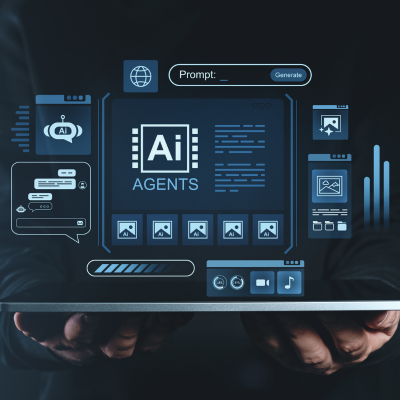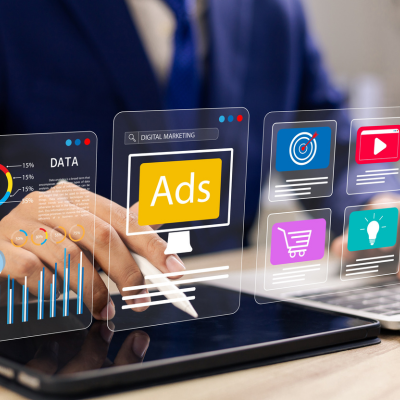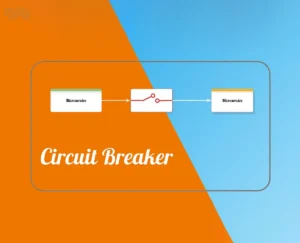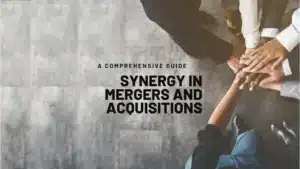Introduction
Generative AI models have revolutionized various domains, including natural language processing, image generation, and now, video creation. In this article, we’ll explore how to use the Language Model from Meta (LLaMA) to create videos with voice, images, and perfect lip-syncing. Whether you’re a developer or an AI enthusiast, understanding LLaMA’s capabilities can open up exciting possibilities for multimedia content creation this article help you Leveraging Generative AI for Video Creation.
Understanding LLaMA
Generative AI models have revolutionized various domains, including natural language processing, image generation, and now, video creation. In this article, we’ll explore how to use the Language Model from Meta (LLaMA) to create videos with voice, images, and perfect lip-syncing. Whether you’re a developer or an AI enthusiast, understanding LLaMA’s capabilities can open up exciting possibilities for multimedia content creation.
- Multimodal Inputs: LLaMA takes both text and visual inputs. You provide a textual description of the scene, along with any relevant images or video frames.
- Language-Image Fusion: LLaMA processes the text and images together, generating a coherent representation of the scene. It understands context, objects, and actions.
- Lip-Syncing: LLaMA predicts the lip movements based on the spoken text. It ensures that the generated video has accurate lip-syncing, making it look natural and realistic.
The Science Behind Lip-Syncing
Lip-syncing is crucial for creating engaging videos. When the lip movements match the spoken words, the viewer’s experience improves significantly. However, achieving perfect lip-syncing manually is challenging. That’s where AI models like LLaMA come into play. They analyze phonetic patterns, facial expressions, and context to generate accurate lip movements.
Steps to Create Videos with LLaMA
1. Data Preparation
- Collecting Video Clips and Transcripts:
- Gather a diverse dataset of video clips (e.g., movie scenes, interviews, or recorded speeches).
- Transcribe the spoken content in each video clip to create corresponding transcripts.
- Annotate the lip movements in each clip (frame by frame) using tools like OpenCV or DLib.
2. Fine-Tuning LLaMA
- Preprocessing Text and Images:
- Clean and preprocess the textual descriptions you’ll provide to LLaMA.
- Resize and normalize the images to a consistent format (e.g., 224×224 pixels).
- Fine-Tuning LLaMA:
- Use the Hugging Face Transformers library to fine-tune LLaMA on your lip-syncing dataset.
- Example of fine-tuning using PyTorch and Hugging Face Transformers:
from transformers import LlamaForConditionalGeneration, LlamaTokenizer
import torch
# Load pre-trained LLaMA model
model_name = “meta/llama”
tokenizer = LlamaTokenizer.from_pretrained(model_name)
model = LlamaForConditionalGeneration.from_pretrained(model_name)
# Fine-tune on your lip-syncing dataset (not shown here)
# …
# Generate lip-synced video description
input_text = “A person is saying…”
input_ids = tokenizer.encode(input_text, return_tensors=”pt”)
with torch.no_grad():
output = model.generate(input_ids)
generated_text = tokenizer.decode(output[0], skip_special_tokens=True)
print(“Generated description:”, generated_text)
3. Input Text and Images
- Creating Scene Descriptions:
- Write detailed textual descriptions of the scenes you want to create.
- Include relevant context, actions, and emotions.
- Handling Images:
- Use Python’s PIL (Pillow) library to load and manipulate images.
- For example, to overlay an image onto a video frame:
from PIL import Image
# Load an image
image_path = “path/to/your/image.jpg”
image = Image.open(image_path)
# Resize and crop the image if needed
image = image.resize((224, 224))
# Overlay the image on a video frame (not shown here)
# …
4. Generate Video
- Combining Text and Images:
- Use LLaMA to generate a coherent video description based on the scene text.
- Combine the generated description with the relevant images.
- Stitching Frames into a Video:
- Use FFmpeg to convert individual frames into a video.
- Example command to create a video from image frames:
- ffmpeg -framerate 30 -i frame_%04d.jpg -c:v libx264 -pix_fmt yuv420p output.mp4
5. Evaluate and Refine
- Lip-Syncing Evaluation:
- Develop a metric to evaluate lip-syncing accuracy (e.g., frame-level alignment).
- Compare the generated video with ground truth lip movements.
- Refining LLaMA:
- Fine-tune LLaMA further based on evaluation results.
- Experiment with different hyperparameters and training strategies.
Live Streaming Videos with LLaMA
1. Encoding and Compression
- Video Encoding:
- Encode the video using H.264 or H.265 (HEVC) codecs for efficient compression.
- Example FFmpeg command for encoding:
ffmpeg -i input.mp4 -c:v libx264 -preset medium -crf 23 -c:a aac -b:a 128k output_encoded.mp4
- Video Compression:
- Compress the video to reduce file size and improve streaming efficiency.
- Adjust bitrate and resolution as needed.
2. Streaming Server Setup
- NGINX RTMP Module:
- Install NGINX with the RTMP module.
- Configure NGINX to accept RTMP streams.
- Example NGINX configuration:
rtmp {
server {
listen 1935;
application live {
live on;
allow publish all;
allow play all;
}
}
}
3. RTMP Streaming
- Using PyRTMP:
- Install the PyRTMP library (pip install pyrtmp).
- Stream your video to the NGINX RTMP server:
from pyrtmp import RTMPStream
# Replace with your NGINX RTMP server details
rtmp_url = “rtmp://your-server-ip/live/stream_key”
# Create an RTMP stream
stream = RTMPStream(rtmp_url)
# Open a video file (replace with your video source)
video_file = “path/to/your/video.mp4”
stream.open_video(video_file)
# Start streaming
4. Embed in Web Pages or Apps
<video controls autoplay>
<source src=”rtmp://your-server-ip/live/stream_key”type=”rtmp/mp4″>
Your browser does not support the video tag.
</video>
- For mobile apps, use streaming libraries like Video.js or native video players.
Remember to replace “your-server-ip” and “stream_key” with your actual NGINX RTMP server details. Additionally, ensure that your video source (e.g., recorded LLaMA-generated video) is accessible from the server.
Real-World Applications
Where This Can Be Applied:
- EdTech: AI tutors or video explainers with realistic avatars
- Marketing: Personalised video messages for customers
- Entertainment: AI-driven dubbing or content translation
- Customer Support: Virtual human-like assistants with synced speech
Here’s a deeper explanation of how Generative AI for video creation can be practically applied to the four use cases listed:
1. EdTech: AI Tutors or Video Explainers with Realistic Avatars
How it’s applied:
- You can use LLaMA-style generative models to create AI avatars of educators who deliver lessons in natural, human-like ways.
- By combining scripted educational content with text-to-speech (TTS) and lip-syncing models, these avatars can teach topics ranging from school subjects to professional courses.
- Lip-sync accuracy ensures that the avatars appear more engaging and trustworthy, improving learning outcomes.
Examples:
- A virtual science teacher explaining complex physics concepts with visuals and synced voice.
- Multilingual tutors delivering the same lesson in different languages using the same avatar, powered by translation + lip-syncing adjustment.
Benefits:
- 24/7 availability
- Cost-effective scaling of educational content
- Personalization by subject, level, or language
2. Marketing: Personalized Video Messages for Customers
How it’s applied:
- Marketers can use the Generative AI model and Agentic AI frameworks to generate custom video ads with a brand spokesperson (real or AI-generated) addressing the customer by name or referencing personal preferences or recent actions.
- The model can take templated scripts like:
“Hey [Name], we saw you were interested in [Product]. Let me show you how it works…”
and render fully lip-synced video messages.
Examples:
- E-commerce platforms sending personalized product demos
- Real estate agents sending AI-recorded walkthroughs with the buyer’s name and requirements
Benefits:
- Higher conversion through personalization
- Better customer engagement than generic video ads
- Automated at scale without human presenters
3. Entertainment: AI-Driven Dubbing or Content Translation
How it’s applied:
- Once a movie or show is translated into another language using speech-to-text + machine translation + TTS, LLaMA-like models can be used to re-sync the actors’ lip movements to match the new dialogue.
- This leads to high-quality dubbed content that feels native to the viewer.
Examples:
- Global streaming services releasing multilingual versions with lip-synced actors
- Indie creators auto-translating and distributing their content in 10+ languages
Benefits:
- Lower costs vs traditional dubbing
- Seamless viewer experience (looks like the actor actually spoke the dubbed language)
- Accessibility to new audiences worldwide
4. Customer Support: Virtual Human-like Assistants with Synced Speech
How it’s applied:
- Companies can deploy AI agents with realistic faces that speak to customers through video—whether on websites, mobile apps, or kiosks.
- These avatars can be integrated with chatbots or voice assistants, and LLaMA-style video rendering ensures the face matches the voice in real-time or near-real-time.
Examples:
- Banking apps with an AI teller who explains account issues
- Healthcare portals where a virtual nurse explains diagnosis reports
Benefits:
- More natural interaction compared to text or static bots
- Builds trust, especially in high-emotion or sensitive domains
- Works across languages with multilingual lip-syncing
Agentic AI Frameworks for Orchestrating Video Creation
These frameworks can act as the “brain” that coordinates individual AI models (e.g., for script generation, voice synthesis, lip-syncing, rendering, and streaming):
1. LangChain
- Use: Orchestrating sequential or parallel AI tasks like script generation → voice → video rendering.
- Strength: Supports memory, tool use, and agent behavior for creative pipelines.
- Ideal for: Automating prompt engineering, metadata extraction, and chaining models (e.g., LLM → TTS → video output).
2. CrewAI
- Use: Multi-agent collaboration where each agent has a role (e.g., Script Writer, Animator, Editor).
- Strength: Highly modular, perfect for distributed multimedia workflows.
- Ideal for: Coordinating tasks like writing scripts, generating images, voiceovers, and compiling scenes.
3. AutoGen (by Microsoft)
- Use: Structured, programmable multi-agent workflows with human-in-the-loop optionality.
- Strength: Excellent for building complex, tool-using agents in creative domains.
- Ideal for: Orchestrating the entire video generation loop — including querying APIs, file storage, and streaming integration.
4. OpenDevin (OSS Dev Agent)
- Use: Automating development and deployment tasks through natural language.
- Strength: Good for automating infrastructure setup, like encoding, server deployment, or streaming automation.
- Ideal for: Setting up NGINX RTMP configs, managing FFmpeg commands, and automating streaming workflows.
5. SuperAGI
- Use: Open-source agent framework with GUI and runtime orchestration.
- Strength: Offers a visual agent workflow, integrates with APIs easily.
- Ideal for: Creating agents that handle real-time monitoring of video generation status and stream readiness.
6. Autogen Studio (GUI for Agent Design)
- Use: Drag-and-drop interface for designing autonomous AI pipelines.
- Strength: Suitable for prototyping educational or marketing agents visually.
- Ideal for: EdTech/Marketing use cases to map script → voice → video → user delivery.
Conclusion
Generative AI models like LLaMA are transforming video creation, and with the right Agentic AI frameworks, tools and techniques, developers can harness their power to produce captivating multimedia content. Experiment, iterate, and explore the boundaries of what’s possible in the world of AI-driven video generation and live streaming.
Happy coding!
Additional Resources (Added for Dataset + Evaluation Support)
Useful Tools for Dataset Preparation and Lip-Sync Annotation:
- OpenCV: For video frame extraction and processing
- DLib: For facial landmark detection to track lip positions
- Montreal Forced Aligner: To align audio with phonemes
- Adobe Premiere / Davinci Resolve: For manual labeling (if needed)
- AVSpeech or GRID Corpus: Sample datasets for lip-sync tasks
Further Reading:
- Wav2Lip: Accurate Lip Sync from Audio (https://arxiv.org/abs/2008.10010)
- SyncNet: Learning Sync between Audio and Video (https://github.com/joonson/syncnet_python)
- Meta’s LLaMA: Release (https://ai.meta.com/llama/)
This is a detailed article written by expert gives a clear understanding on Leveraging Generative AI for Video Creation Want to learn and make career in Generative AI Explore the advance Agentic and Generative AI Course at Amquest Education.
Frequently Asked Questions (FAQs)
1. What is Generative AI in video creation?
Generative AI in video creation refers to using AI models to automatically generate videos from text, images, or audio inputs. It can handle tasks like voice generation, lip-syncing, and scene creation, making video production faster and more cost-effective.
2. How does LLaMA help in creating AI-generated videos?
LLaMA (Language Model from Meta) processes both text and images together, understands context, and predicts accurate lip movements for video generation. This ensures that the final video looks natural with perfect lip-syncing and smooth integration of visuals and voice.
3. Why is lip-syncing important in AI video generation?
Lip-syncing ensures that the speaker’s mouth movements match the spoken audio. Without accurate lip-sync, AI-generated videos can look robotic or unrealistic. Proper lip-syncing increases viewer engagement, trust, and overall video quality.
4. What are the steps to create videos using Generative AI?
The process usually involves:
- Preparing data (video clips, transcripts, lip annotations).
- Fine-tuning an AI model like LLaMA.
- Inputting scene descriptions and images.
- Generating frames and stitching them into a video.
Evaluating and refining lip-syncing accuracy.
5. Can AI-generated videos be used for live streaming?
Yes. By combining LLaMA with streaming technologies like NGINX RTMP and FFmpeg, you can stream AI-generated videos in real-time. This is useful for webinars, virtual assistants, or live marketing campaigns.
6. What are real-world applications of Generative AI video creation?
Generative AI videos can be applied in:
- EdTech: AI tutors and explainer videos with realistic avatars.
- Marketing: Personalized customer video messages.
- Entertainment: AI-driven dubbing and content translation.
Customer Support: Virtual assistants with human-like interaction.
7. Which frameworks support AI-powered video generation workflows?
Popular Agentic AI frameworks include LangChain, CrewAI, AutoGen, OpenDevin, SuperAGI, and Autogen Studio. These help orchestrate tasks like script writing, voice synthesis, video rendering, and streaming automation.
8. What tools are needed for building AI lip-sync datasets?
Some common tools include:
- OpenCV & DLib for frame extraction and facial landmark detection.
- Montreal Forced Aligner for aligning audio with phonemes.
- Adobe Premiere or Davinci Resolve for manual labeling.
Datasets like AVSpeech or GRID Corpus for training.
9. Is Generative AI video creation useful for beginners?
Yes. Even if you’re new, you can start experimenting with pre-trained models like LLaMA using Hugging Face and tools like FFmpeg. While advanced customization requires coding, basic video generation and lip-syncing are beginner-friendly.
10. How can I learn more and build a career in Generative AI?
To pursue a career in AI-driven video creation, you should explore courses in Generative AI, Agentic AI frameworks, and multimedia automation. Institutions like Amquest Education offer advanced programs in Generative AI and Agentic AI Engineering to help you master these skills and apply them in real-world scenarios.










